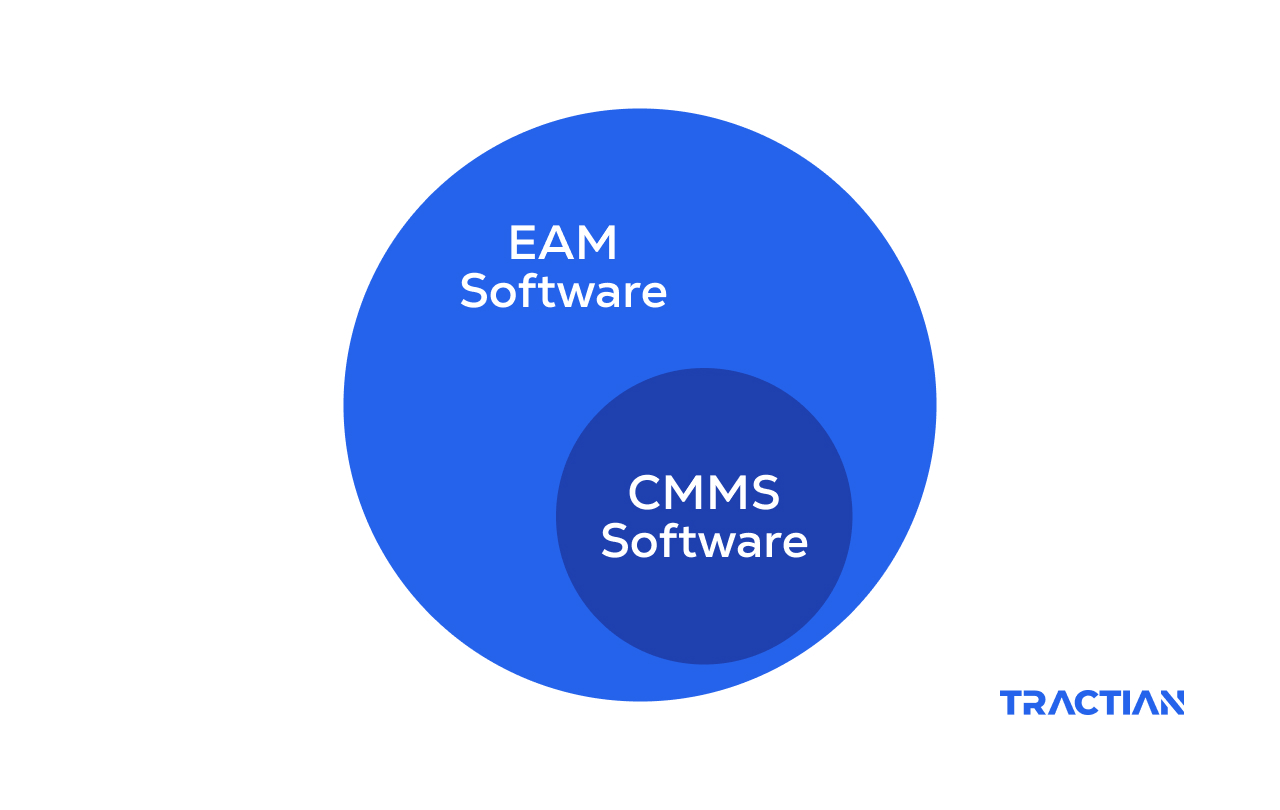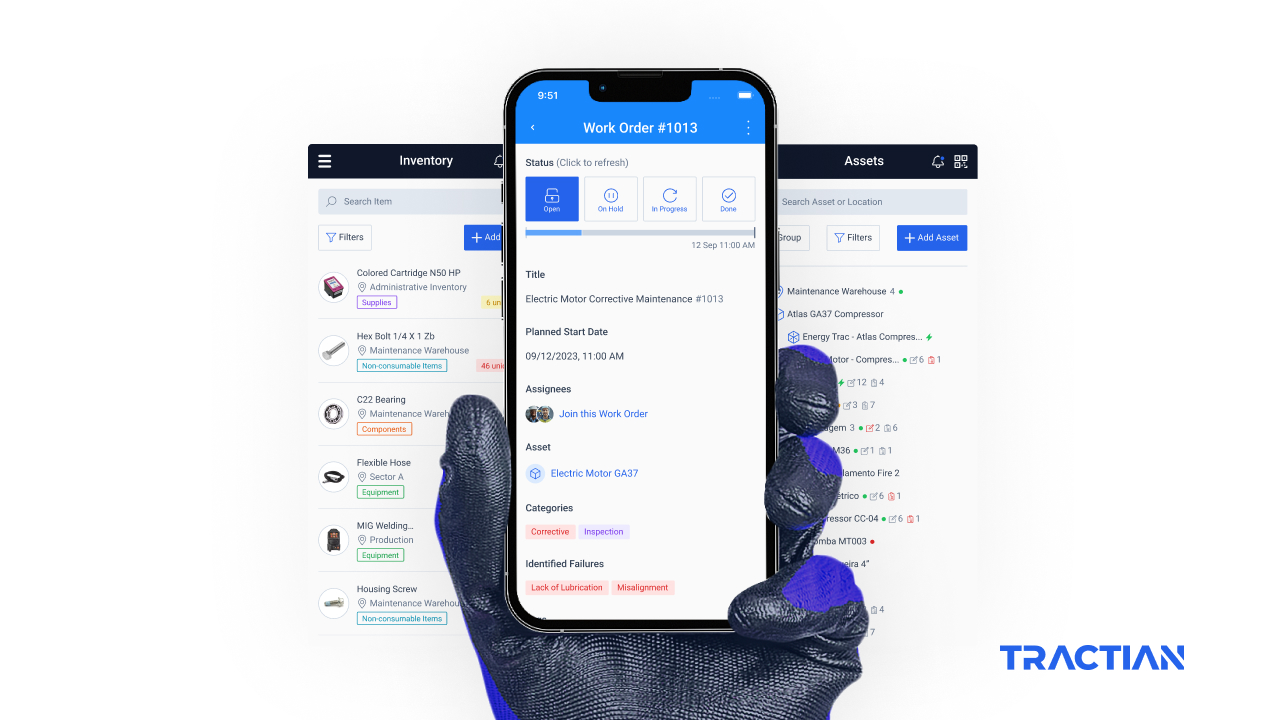What Is CMMS Software and How to Use It in Maintenance
CMMS software, or Computerized Maintenance Management Systems, are an indispensable tool when it comes to streamlining maintenance workflows and ensuring operational efficiency. In the dynamic landscape of current manufacturing plants and industrial operations, effective asset management stands as a cornerstone of success and must be seen as a priority.
The evolution of technology has ushered in a new era of maintenance management, bidding farewell to outdated, paper-based systems and embracing digital solutions. CMMS software enables organizations to make data-driven decisions and extend the lifecycle and availability of assets.
In this comprehensive guide, we’ll unravel the basics of CMMS software, going over features, insights, best practices and implementation, illustrating how it empowers businesses to not only keep their operations running smoothly but also to proactively enhance their maintenance strategies.
What Is CMMS?
CMMS software is a system designed to streamline and optimize maintenance and asset management. It helps maintenance teams in a variety of different day-to-day tasks, such as: recording and organizing asset data, scheduling PMs (Preventive Maintenance), creating work orders, keeping track of maintenance performed on specific equipment, managing inventory, and generating maintenance KPIs in a single, centralized platform.
Work Order Management: All You Need to Know
The data stored in a CMMS gives maintenance teams and managers the ability to plan, execute, and track maintenance activities, thus improving asset management. By digitizing these processes, the software empowers businesses to move away from labor-intensive, paper-based systems towards a more efficient and data-driven approach.
CMMS software also acts as a communication hub, enabling seamless collaboration among maintenance personnel, supervisors, and other stakeholders. It allows tasks to be assigned to specific technicians, and for progress to be tracked and documented so teams can manage maintenance, make informed decisions, prioritize tasks, and allocate resources effectively.
And they are able to do all of this through mobile-first technology, so anyone involved in the tasks can be updated remotely via mobile devices such as tablets and smartphones.
Learn All About Mobility and Remote Maintenance
5 Benefits of CMMS Software
Implementing a CMMS system can bring a wide array of positives that impact the whole operation, not just maintenance. Here are some of the key benefits of CMMS:

Data-Driven Decision-Making
CMMS software provides a structured framework for planning, scheduling, and executing maintenance tasks. This streamlines operations, reducing downtime and ensuring that critical assets remain in optimal condition.
These systems also generate valuable data and performance metrics. This information empowers organizations to make data-driven decisions, identify trends, and implement continuous improvement initiatives.
Enhanced Asset Performance
With CMMS, organizations can track the performance of individual assets over time. This data allows for informed decisions about repairs, replacements, and upgrades, ultimately leading to improved asset reliability and availability, as well as making them last for longer life cycles.
Improved Resource Allocation
By optimizing maintenance and PM schedules, CMMS allows businesses to make the most efficient use of their workforce and equipment. This leads to increased productivity and cost-effectiveness when allocating resources.
CMMS systems facilitate efficient management of spare parts and supplies. By tracking inventory levels and automating restock alerts, businesses can optimize procurement processes, minimizing excess stock while ensuring essential items are always available.
Lean Manufacturing in Maintenance: How to Reduce Waste
Enhanced Safety and Risk Management
CMMS helps to ensure that assets are well-maintained and operating safely. This reduces the risk of accidents or failures that could lead to costly liabilities, injuries, or damage to the environment.
Furthermore, by making sure maintenance technicians have information remotely and on mobile devices, CMMS systems allow shop floor professionals to work with increased safety, sometimes without having to access hard-to-reach areas or hazardous environments.

Versatility Across Industries
CMMS proves invaluable across a diverse spectrum of industries – manufacturing plants, healthcare facilities, retail and wholesale companies, oil & gas and pulp & paper industries, mining and sugar & alcohol factories, and chemical operations to name a few.
Whether to streamline production processes and avoid downtime, or to maintain critical equipment and ensure regulatory compliance, CMMS software provides high standards of precision and reliability.
These examples merely scratch the surface of CMMS applications. Regardless of the sector, CMMS empowers organizations to take control of their maintenance operations, enhance asset performance, and drive operational excellence.
How to Use CMMS Software in Maintenance
While the adoption of CMMS software promises significant benefits, its successful implementation requires careful planning and strategic execution.
Initially, it is important to define clear goals for the project your company is looking to implement. Do that by establishing clear, measurable objectives such as reducing downtime, improving asset life, or enhancing regulatory compliance.
Step two is selecting the right CMMS solution for your operation. Conduct thorough research to identify a system that aligns with your industry, company size, and specific maintenance needs. Consider factors like scalability, ease of use, and available features.
Maintenance in Industry 4.0: The Role of Management Software
Next is team training. Provide comprehensive training to all users involved in the CMMS implementation. This includes maintenance technicians, maintenance and plant managers, and any other relevant staff. A well-trained team will maximize the system’s effectiveness.
Working with a service provider who will be at your company’s side all throughout implementation is ideal. That way, you can customize the system to your specific maintenance needs and operational requirements. Customize fields, forms, and reports to capture the data that is most relevant to your maintenance processes.
The work doesn’t end after the system is implemented. To ensure success, regularly review and analyze data and reports. Monitor trends, identify areas for improvement, and make data-driven decisions to optimize maintenance operations.
Lastly, for a successful CMMS implementation, you will need to adopt a continuous learning mindset. Stay updated with the latest features and best practices related to your CMMS. Encourage ongoing training for your team to make the most out of the system’s capabilities.
Finding a Strategic Business Partner for Your Operations
Across this entire article, we have touched on the importance of foresight and precision in order to take maintenance strategies to the next level. And as seen in the section above, choosing the right tool is fundamental to ensuring the success of your project.
Enter TracOS™, TRACTIAN’s Maintenance Management Software. The catch here is: TracOS™ is an EAM Software (Enterprise Asset Management). This, however, doesn’t mean it is not a CMMS – it covers even more ground than the usual CMMS and is used by large companies to control every aspect of maintenance and asset management.
Learn more about Enterprise Asset Management (EAM)

TracOS™ is an indispensable solution when it comes to leveraging real-time, mobile-first data to elevate availability and reliability rates. It allows you to centralize all maintenance activities, work order tickets, PM schedules, inventory items, KPIs and so much more – all within a unified system. Some of its main features include:
- Remote asset and maintenance management
- Work order creation and management
- Automatic PM Scheduling
- Automatic generation of maintenance KPIs, such as MTBF, MTTR, Availability and Reliability
- Record of machine status and maintenance history
- Seamless work requests with the use of QR Codes
- Real-time communication via the built-in chat
- Complete maintenance mobility via the TRACTIAN App, even in no-service areas

Beyond being a comprehensive maintenance software, TracOS™ raises the bar with its end-to-end implementation. The commitment to the customer does not end with software delivery or after system adoption.
The entire process is closely tracked by a dedicated, maintenance-specialized engineering team who know both your industry vertical and TRACTIAN technology inside out.
For example, TracOS™ is designed to integrate with tools you already use on a daily basis. That could be Enterprise Resource Planning systems such as Oracle or SAP, or systems like Osisoft.
TRACTIAN is certified as SAP Silver Partner, which means TracOS™ has been tested and approved in all SAP criteria. All data from ERPs is synchronized to the EAM, and actions performed are automatically mirrored in TracOS™.

All the information already stored in those systems won’t be lost, but seen in a simpler, more intuitive way in TracOS, while also allowing you to take conclusions and make decisions based on real-time, data-based insights.
Our own engineering team makes this integration possible while keeping close contact with the project stakeholders. All the necessary blueprints for integration are specific to each project and are created according to the operational needs of each client.
It’s a done-for-you process: TRACTIAN experts map out all necessary requirements along with the maintenance team to build a customized, fully functional integration.
The goal is to deliver value in the form of return on investment and increased availability. That’s what makes a successful project.
Up to 18x return on investment; learn more
Ready to start exploring a new journey towards efficient, cost-effective, and sustainable maintenance operations? Get in touch with our experts and schedule a demo.
Almost there, !
We just need a few more informations: